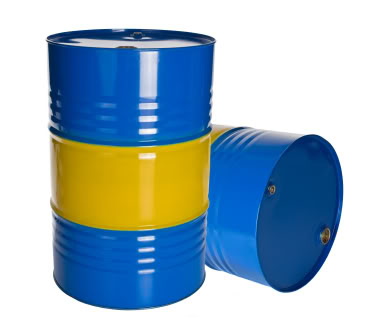U.S. EPA Proposes 1-hour National Ambient Air Quality Standard for Sulfur Dioxide
On November 17, 2009, U.S EPA announced that they were proposing to establish a new 1-hour sulfur dioxide (SO2) National Ambient Air Quality Standard (NAAQS) between 50 and 100 parts per billion by volume (ppbv) (i.e., approximately 130 to 260 mg/m3). Currently, a Prevention of Significant Deterioration (PSD) permit application requires a demonstration that the existing annual, 24-hour, and 3-hour SO2 NAAQS will not be exceeded as a result of a project. The establishment of a 1-hour SO2 NAAQS may make it more difficult for facilities to demonstrate compliance as part of an SO2 NAAQS analysis for two reasons. First, the 1-hour standard would reflect worst-case dispersion conditions and elevated modeled concentrations due to a combination of either building aerodynamic downwash or adverse meteorological conditions. Second, the high end of the proposed range of the 1-hour NAAQS is a relatively low standard in comparison to the current 3-hour NAAQS (1,300 mg/m3). Note that the statistical criteria used to evaluate modeled concentrations against the proposed 1-hour standard and current 3-hour standard are different and do not allow a one-to-one comparison between the standards (they are not measured against peak modeled concentrations). Regardless of the statistical considerations, an air quality modeling demonstration will need to address a 
PADEP to Propose Substantial Air Fee Increases and New Air Fees for 2010 and Beyond
At the February 12, 2009 Air Quality Technical Advisory Committee (AQTAC) meeting, the Pennsylvania Department of Environmental Protection (PADEP) introduced proposed new amendments to Chapters 127 and 139 of the State’s air regulations. The proposed changes to Chapter 127 would affect Subchapter I, the Plan Approval and Operating Permit Fees. The proposed changes to Chapter 139 would create a new Subchapter D entitled Testing, Auditing, and Monitoring Fees. The revised and new sections of these rules include substantial increases to current fees for various types of Plan Approvals and Operating Permits and would create new fees for PADEP efforts associated with reviewing and/or taking action on a variety of submittals required for regulated sources. The proposed rule revisions can be viewed here.
The various fee increases and new fees are proposed for three (3) separate time periods: 2010 to 2014, 2015 to 2019, and 2020 and beyond. Some examples of the changes include increasing the fee for a simple plan approval applcation from $1,000 to $1,300 in 2010, and to $2,000 by 2020; and increasing the fee for a Prevention of Significant Deterioration (PSD) application from $22,700 to $27,200 in 2010, and to $35,700 by 2020. There will also be new fees for items such as the Request for Determination (RFD) forms and substantial charges for any PADEP efforts associated with reviewing air quality modeling and risk assessments. The annual Title V emission fee is proposed to increase to $70 per ton on January 1, 2010.
The biggest surprise in the proposed rule revisions is the establishment of new fees in Chapter 139. Sources would be charged for everything from reviewing stack test protocols and test reports to observing and/or having PADEP conduct tests. A number of fees are also proposed for sources that operate continuous emission monitoring systems (CEMS). The fees vary based on the CEMS-related activity and virtually everything reviewed by PADEP as part of the CEMS program would be charged a fee. For example, review of Phase 1 plans and Phase 3 test reports would be subject to separate fees, as would various CEMS Level 1 through Level 4 audits.
The Pennsylvania Environmental Quality Board (EQB) gave notice at its July 21, 2009 meeting that it is submitting the proposed amendments for regulatory review. Interested persons are invited to submit written or electronic comments, suggestions, or objections regarding the proposed amendments to EQB through December 21, 2009. EQB will also hold 
PADEP Provides Technical Guidance on Waste Derived Liquid Fuels
The Pennsylvania Department of Environmental Protection (PADEP) has finalized revisions to Technical Guidance Document No. 275-2101-009 regarding Waste Derived Liquid Fuels (WDLFs). The requirements in the technical guidance document are for guidance purposes only and are not meant to be a regulation.
The technical guidance document provides definitions for WDLF, hazardous WDLF, waste oil fuel, on-specification waste oil fuel, off-specification waste oil fuel, toxic substances WDLF, waste biofuel oil, and other WDLF. Waste oil fuel with contaminant concentrations less than the listed specifications is termed ”on-specification waste oil fuel.” Waste oil fuel that exceeds any listed specification level is termed ”off-specification waste oil fuel.” The methods of classification will be used in conjunction with PADEP’s permitting requirements to identify the appropriate level of permit review. The document also contains general permit review procedures, specific procedures for each classification, and analytical and sampling techniques including total halogens screening, taking and retaining samples, on-specification waste oil fuel auditing, PADEP audit sampling, and limitations.
Owners and operators of new sources, as well as modified 
U.S. EPA Establishes Startup/Shutdown Standards Under Subpart VVVVVV
On October 29, U.S. EPA issued National Emission Standards for Hazardous Air Pollutants (NESHAP) for nine (9) area source categories in the chemical manufacturing sector as a single, combined subpart under 40 CFR Part 63, Subpart VVVVVV. The specific categories covered under Subpart VVVVVV include: Agricultural Chemicals and Pesticides Manufacturing, Cyclic Crude and Intermediate Production, Industrial Inorganic Chemical Manufacturing, Industrial Organic Chemical Manufacturing, Inorganic Pigments Manufacturing, Miscellaneous Organic Chemical Manufacturing, Plastic Materials and Resins Manufacturing, Pharmaceutical Production, and Synthetic Rubber Manufacturing.
The United States Court of Appeals for the District of Columbia Circuit (the Court) vacated two (2) provisions in the Clean Air Act (CAA) Section 112 regulations related to emissions of hazardous air pollutant (HAP) emissions during periods of startup, shutdown, and malfunction (SSM) during the comment period for the proposed Subpart VVVVVV rule. The vacated provisions, 40 CFR §§63.6(f)(1) and (h)(1), were part of the NESHAP General Provisions (i.e., 40 CFR Part 63, Subpart A). These provisions are typically incorporated into the NESHAP regulations for specific source categories and exempt sources from the requirement to comply with the applicable NESHAP emission standard during periods of SSM. The proposed Subpart VVVVVV rule included references to 40 CFR §§63.6(f)(1) and (h)(1) for SSM periods. In response to the vacatur of the SSM provisions, U.S. EPA revised the final version of Subpart VVVVVV to state that 40 CFR §§63.6(f)(1) and (h)(1) do not apply. Consistent with the Court’s decision, the final Subpart VVVVVV emission standards will apply at all times.
U.S. EPA also established separate emission standards for the Subpart VVVVVV continuous process vent sources that will apply during startup and shutdown. U.S. EPA justified the alternative startup and shutdown standards by stating that the (collective) 
A pre-publication copy of Subpart VVVVVV can be viewed here.
Should You Throw Your SSM Plan Out the Window Now That the DC Circuit Has Issued Their Mandate Vacat
On October 16, 2009, the United States Court of Appeals for the District of Columbia Circuit (the Court) issued its mandate vacating the Startup, Shutdown, and Malfunction (SSM) exemption provisions of 40 CFR §§63.6(f)(1) and (h)(1). The Court issued its original SSM vacatur ruling on December 18, 2008. Since then, the regulated community has generally been in a state of confusion regarding the full impact of the Court’s decision on affected operations. On July 22, 2009, in the wake of the Court’s findings, U.S. EPA issued guidance, known as the Kushner Guidance Letter, that attempted to clarify which startups, shutdowns, and malfunctions (SSM) are exempt from applicable Maximum Achievable Control Technology (MACT) standards and which are not. The Kushner Guidance Letter states U.S. EPA’s position that the vacatur of the SSM exemption will, immediately upon issuance of the mandate, affect only those MACT standards that both incorporate the specific vacated SSM Exemption provisions by reference (i.e., 40 CFR §§63.6(f)(1) and (h)(1)) and contain no other text that provides SSM protections.
In addition to the direct and immediate impact of the vacatur on sources subject to the specific MACT standards identified by U.S. EPA, there is also a broader impact. Many state air pollution control agencies are reviewing all operating permits that contain SSM conditions. One of the areas of scrutiny is how companies are implementing the “general duty” provisions of 40 CFR Part 63. While SSM plans may now be considered moot at certain sources, the general duty requirements of the SSM provisions remain in effect and require source owners and operators to develop, implement, and regularly update their SSM plans. These plans must include detailed recordkeeping, reporting, and training requirements. While companies may be following their existing SSM plans, some companies have been failing to update these plans as they become aware of additional operational upset conditions resulting in SSM incidents.
Not only are companies required to follow their SSM plans, but they also must take all reasonable measures to reduce emissions from the affected sources to the greatest extent which is consistent with good safety and air pollution control practices. More importantly, and in light of the recent court decision, where the SSM plan fails to address or inadequately addresses an event that meets the characteristics of a malfunction, but was not included in the SSM plan at the time the owner or operator developed the plan, the owner or operator must revise the SSM plan within 45 days after the event.
In light of this spotlight created by the recent Court 

